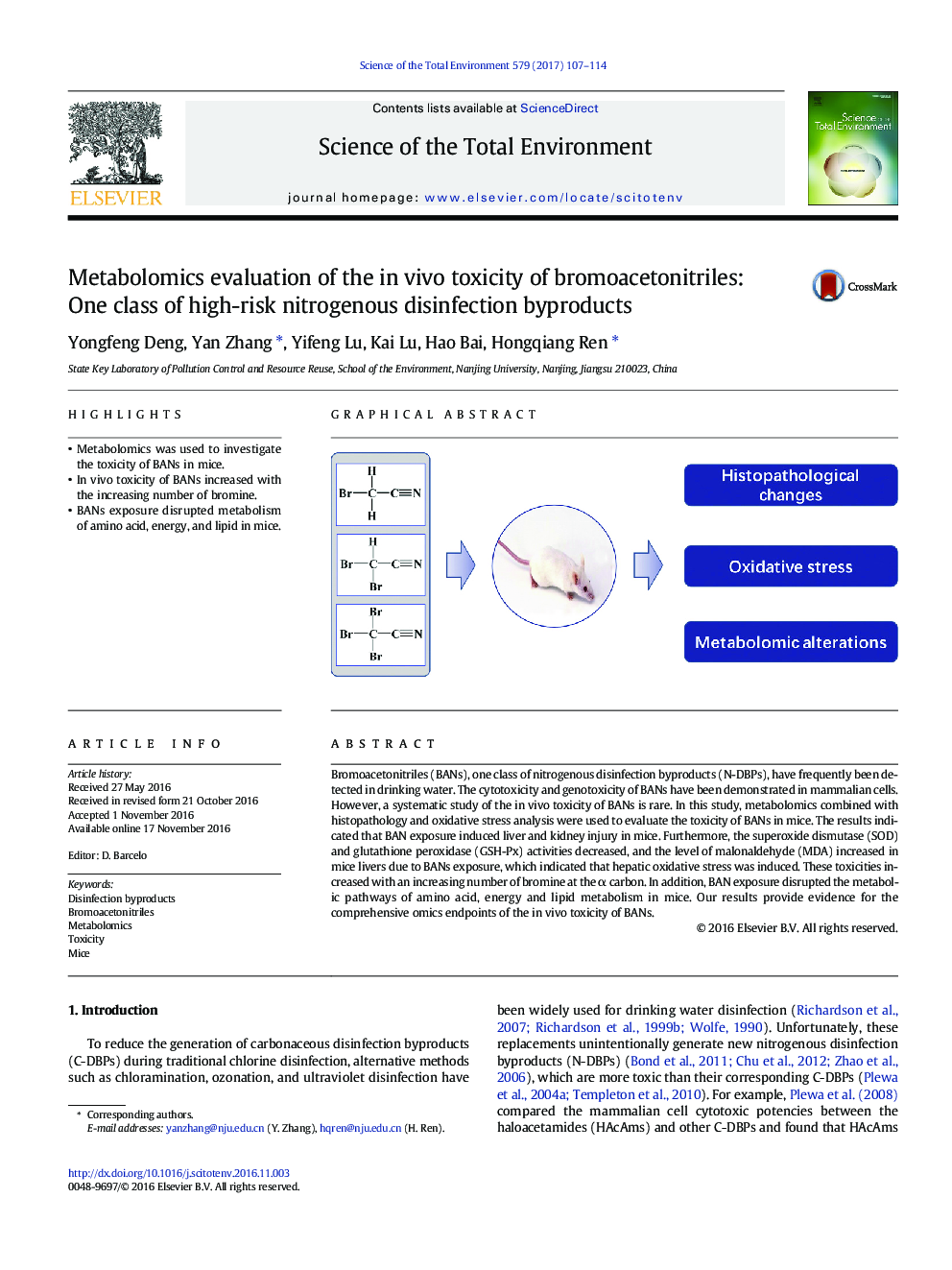| کد مقاله | کد نشریه | سال انتشار | مقاله انگلیسی | نسخه تمام متن |
|---|---|---|---|---|
| 5751363 | 1619712 | 2017 | 8 صفحه PDF | دانلود رایگان |

- Metabolomics was used to investigate the toxicity of BANs in mice.
- In vivo toxicity of BANs increased with the increasing number of bromine.
- BANs exposure disrupted metabolism of amino acid, energy, and lipid in mice.
Bromoacetonitriles (BANs), one class of nitrogenous disinfection byproducts (N-DBPs), have frequently been detected in drinking water. The cytotoxicity and genotoxicity of BANs have been demonstrated in mammalian cells. However, a systematic study of the in vivo toxicity of BANs is rare. In this study, metabolomics combined with histopathology and oxidative stress analysis were used to evaluate the toxicity of BANs in mice. The results indicated that BAN exposure induced liver and kidney injury in mice. Furthermore, the superoxide dismutase (SOD) and glutathione peroxidase (GSH-Px) activities decreased, and the level of malonaldehyde (MDA) increased in mice livers due to BANs exposure, which indicated that hepatic oxidative stress was induced. These toxicities increased with an increasing number of bromine at the α carbon. In addition, BAN exposure disrupted the metabolic pathways of amino acid, energy and lipid metabolism in mice. Our results provide evidence for the comprehensive omics endpoints of the in vivo toxicity of BANs.
226
Journal: Science of The Total Environment - Volume 579, 1 February 2017, Pages 107-114